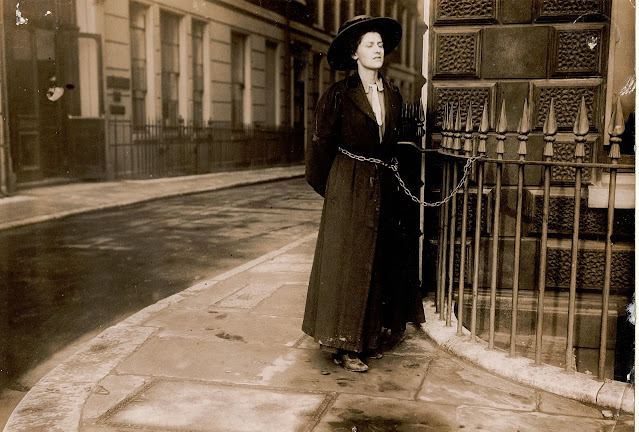Black and white photograph of a suffragette, standing on the corner of Downing Street, London, chained to railings by a chain that is looped around her waist, ca. 1910. She is standing with her hands behind her back, wearing a wide brimmed hat and long coat. Mounted on cream paper, with a press agency stamp and manuscript notes on the reverse.
 |
| (LSE Library) |
Suffragettes were astute and inventive, creating new forms of protest to keep their campaign in the public eye. The majority of their actions were peaceful. Despite this, they were usually described as acts of militancy by politicians and the press.
In October 1908 Muriel Matters and Helen Fox from the Women’s Freedom League chained themselves to a grille in the House of Commons Ladies’ Gallery. The grille was one that kept women out of sight. In order to remove Matters and Fox, the grille had to be cut away.
The following April a number of women from the WSPU handcuffed themselves to statues in St Stephen’s Hall in the Palace of Westminster.
These protests were aimed at drawing publicity to the suffragettes’ demands by creating a public spectacle that couldn’t be removed quickly.
Most of us still associate those images of women chained to railings with the militant suffrage campaign. In fact, incidents like this were quite rare and often carried out for very specific purposes.
In January 1908 Edith New and Olivia Smith chained themselves to the railings outside 10 Downing Street. While they distracted the police outside, their companion Flora Drummond slipped inside the building to disrupt a cabinet meeting.








0 comments:
Post a Comment